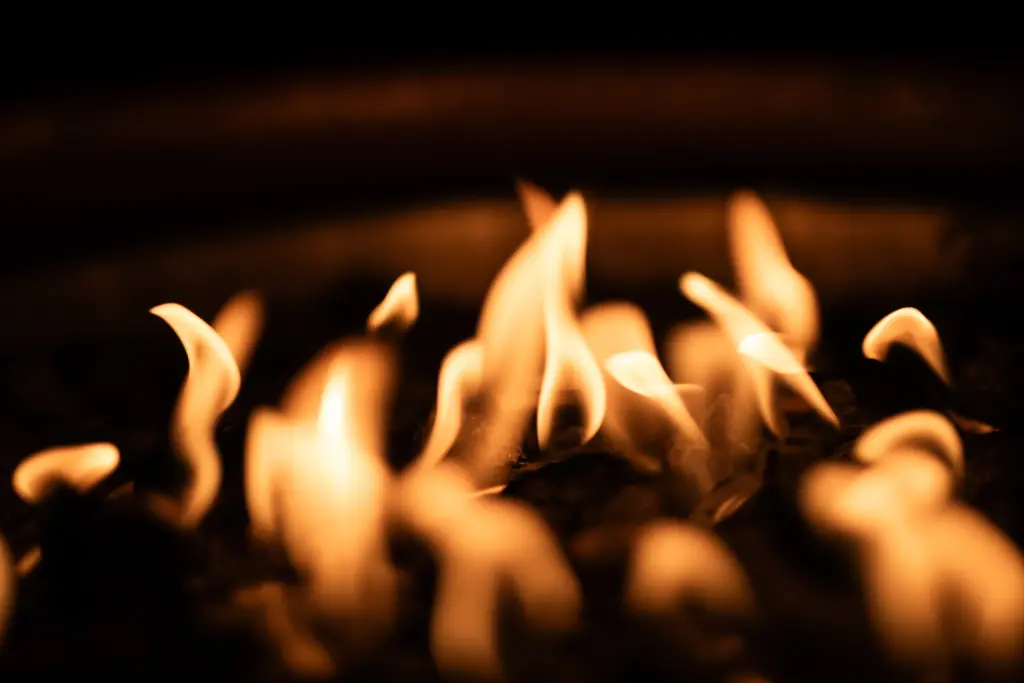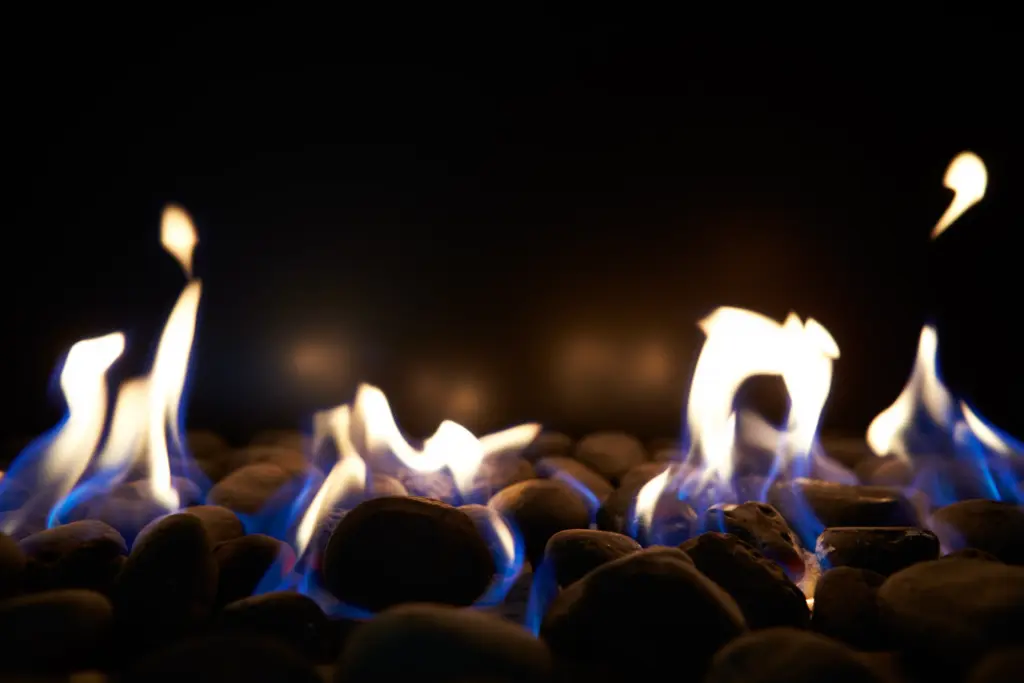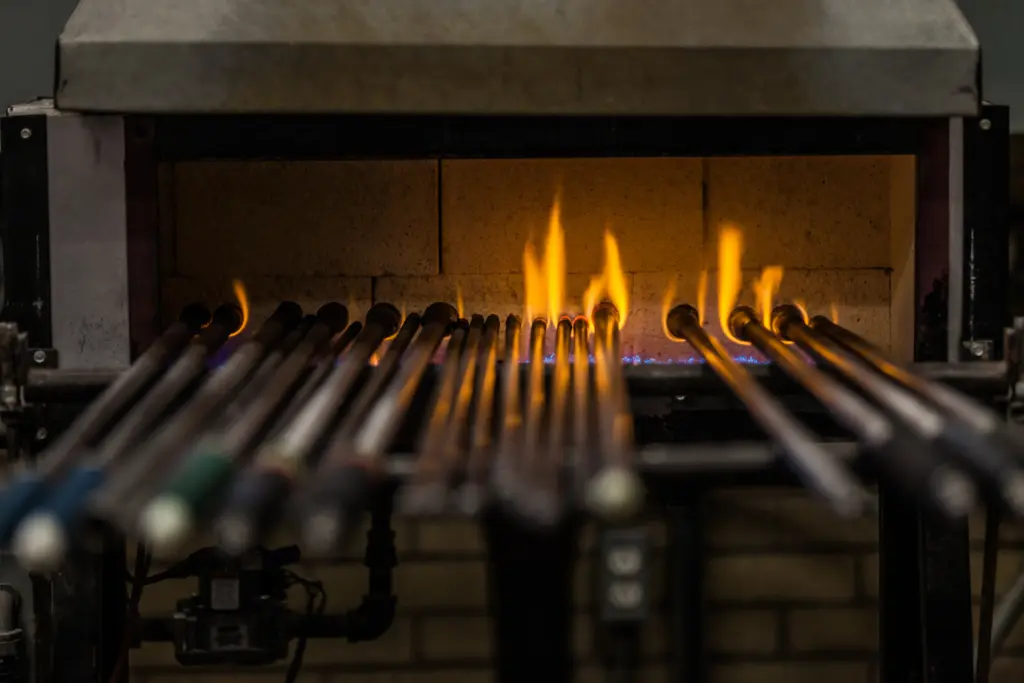Few things are as disappointing as sitting down on a cold Ohio evening, pressing the switch, and realizing your gas fireplace won’t turn on. These fireplaces are designed for convenience and comfort, but like any appliance, they can fail to start when something goes wrong. Sometimes the issue is minor, such as a dead battery in the remote. Other times, it’s a sign of a larger problem with the ignition system or gas supply. By understanding why gas fireplaces fail, what you can safely check on your own, and when to call a professional, you can restore warmth and keep your home safe.

How a Gas Fireplace Is Designed to Work
A gas fireplace combines several components to deliver reliable heat. Gas flows through a valve into the burner, where it is ignited by either a pilot flame or an electronic igniter. Sensors confirm safe operation, and the unit vents combustion gases outdoors. If any of these steps fail, the fireplace won’t start. That’s why a problem that seems small—like a weak flame or unresponsive switch—can stop the system entirely. Understanding how the parts interact helps homeowners see why maintenance is so important.
Power Supply Problems
Some fireplaces use direct electrical connections for ignition systems, blowers, or remote receivers. Others rely on batteries to spark the igniter. If your gas fireplace won’t turn on, the first thing to check is the power source. Replace batteries in wall switches or remotes, confirm the outlet is working, and reset the breaker if necessary. In many cases, what feels like a serious problem is simply a power interruption. However, if power checks out and the fireplace remains unresponsive, another system component may be at fault.
Pilot Light Concerns
Many gas fireplaces rely on a pilot light—a small flame that stays lit continuously and ignites the main burner. If the pilot is out, the fireplace will not start. Drafts from chimneys, dust buildup on the assembly, or moisture in the line can all extinguish the pilot. Relighting usually involves following manufacturer instructions and holding the pilot knob long enough for the flame sensor to recognize it. If the flame won’t stay lit, the thermocouple or thermopile may be dirty or worn. These devices detect the flame and regulate gas flow. When they fail, safety systems shut off the gas, preventing ignition. At this point, a professional should clean or replace the sensor components.
Ignition System Failures
Newer fireplaces often use electronic ignition rather than standing pilots. These systems may rely on a spark igniter, similar to what’s found in gas stoves, or a hot surface igniter that glows red to ignite fuel. If the gas fireplace won’t turn on, the igniter could be cracked, worn, or unable to generate enough heat. Loose wiring, a faulty control module, or a failed switch can also interrupt ignition. Because these components are tied directly to the gas supply, diagnosing and replacing them is a task best left to trained technicians rather than DIY repairs.
Gas Supply Interruptions
Gas must flow properly for ignition to occur. A closed valve, low pressure, or a blockage in the line can prevent the fireplace from starting. Homeowners sometimes shut off the gas in spring and forget to reopen it in winter. Propane systems may run low on fuel, while natural gas lines can occasionally experience pressure fluctuations. The Chimney Safety Institute of America (CSIA) emphasizes that gas-related issues should always be handled by certified professionals. Attempting to open or adjust gas lines without training poses serious risks.

Dirty or Clogged Burners
Burner ports in gas fireplaces are small and can easily become blocked by dust, lint, pet hair, or even spider webs. If gas cannot flow evenly, ignition may fail or flames may appear weak and uneven. In some cases, the fireplace won’t turn on at all because sensors detect improper combustion. While homeowners can gently vacuum around accessible areas, deep cleaning burners requires disassembly and professional tools. This ensures the fireplace burns efficiently without producing dangerous levels of carbon monoxide.
Ventilation and Draft Issues
Gas fireplaces need a steady supply of oxygen to operate. If the vent or flue is blocked, oxygen drops too low for ignition, and the system won’t start. Common culprits include leaves, bird nests, or soot buildup in vented systems. Direct vent fireplaces, which draw air from outdoors, can also fail if intake pipes are blocked by snow or debris. The National Fire Protection Association (NFPA) advises annual vent inspections to prevent these hazards. A blocked vent is not only inconvenient—it can also allow combustion gases to leak indoors.
Carbon Monoxide and Safety Systems
If your gas fireplace won’t turn on, it may be because built-in safety systems are protecting your family. Fireplaces are equipped with sensors that shut off gas flow if conditions are unsafe. This includes problems like weak pilots, poor draft, or incomplete combustion. While it can feel frustrating, these safeguards prevent carbon monoxide buildup and potential fires. Homes with gas fireplaces should always have carbon monoxide detectors installed for additional protection.
Seasonal Use and Ohio Homes
In Northeast Ohio, many families use fireplaces heavily during winter but leave them off during warmer months. When unused for long periods, dust and debris can build up, pilots can go out, and parts may corrode. Older homes in the Cleveland Metro Area may also have outdated fireplace systems that struggle to ignite consistently. For these reasons, annual maintenance is especially important in our region. It keeps fireplaces ready to perform when temperatures drop and ensures they operate safely.
Routine Maintenance Prevents Problems
The best way to avoid ignition failures is through preventive care. Annual inspections allow technicians to clean burners, test sensors, and check for leaks. During these visits, they also verify that vents are clear and that the fireplace is venting properly. This not only improves reliability but also extends the life of your appliance.. A well-maintained fireplace both works better and looks more inviting.
DIY Checks vs. Professional Service
There are a few safe steps homeowners can take if a gas fireplace won’t turn on. Replacing batteries in remotes or wall switches, verifying the breaker, and confirming the gas valve is open are simple and safe. Beyond that, however, most troubleshooting requires specialized knowledge. Gas lines, ignition modules, and safety sensors are not safe to repair without training. Attempting DIY fixes can create leaks, void warranties, or compromise safety. When in doubt, always call a professional.

What a Professional Service Visit Includes
When technicians are called to diagnose why a fireplace won’t start, they follow a detailed checklist. This includes checking gas pressure, cleaning burners, inspecting pilot assemblies, testing electrical connections, and confirming venting. They also look for signs of wear, such as rust or cracks in components. Professional inspections ensure that fireplaces not only ignite but also burn cleanly, reducing the risk of carbon monoxide or soot entering the home. This level of service provides peace of mind that DIY attempts cannot match.
Preventing Future Ignition Problems
Once your fireplace is working again, there are steps you can take to keep it reliable. Operate it according to manufacturer instructions, keep the area around vents free of clutter, and schedule service each year. If your fireplace has a pilot, consider lighting it once or twice during the off-season to ensure the system remains functional. Simple habits like these go a long way toward preventing frustration the next time cold weather arrives.
Professional Fireplace Services in Cleveland Metro Area
For homeowners in Lake, Cuyahoga, Geauga, Summit, and Portage Counties, expert help is close at hand. Green and Clean Home Services provides fireplace inspections, cleaning, and repairs. Whether your fireplace needs routine maintenance, diagnostic testing, or part replacement, trained technicians restore performance safely and efficiently. Their knowledge of Ohio homes and heating needs makes them a trusted partner for local families.
Conclusion
If your gas fireplace won’t turn on, it could be anything from a simple power issue to a serious gas or ignition failure. Rather than taking risks with DIY repairs, focus on safe troubleshooting and rely on professional service for more complex issues. With routine maintenance and expert care, your gas fireplace will continue to provide warmth, beauty, and comfort through many winters ahead. To schedule an inspection or repair, contact Green and Clean Home Services today. Our experienced team helps families across Northeast Ohio enjoy safe, dependable fireplaces all year long.


